Original compilation: Block unicorn
Original compilation: Block unicorn
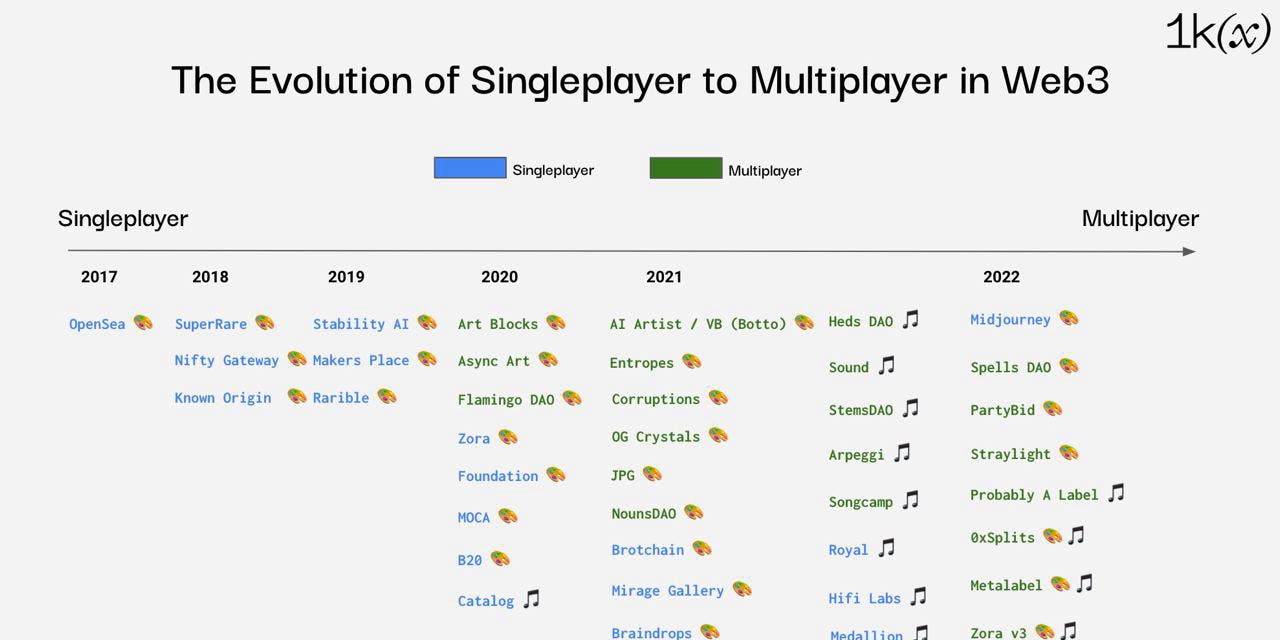
The relationship between creators and end users is basically one-way. Creators create works in isolation in closed gardens, and end consumers are faced with an end product—whether it’s music, an article, a podcast, or art—with limited means to participate in the creative process.
Over the past 4 years, web3 has enabled broader participation in creation, blurring the lines between creators and their communities.
From the blockchain itself as the canvas for entirely new art forms (with on-chain data as input for dynamic art), to the governance infrastructure that allows the community to express what content should be funded, web3 is making the creator process more and more human.
By involving more people in the end-to-end authoring process, we are able to:
Provide a new playing field for creators to define a set of values, source ideas from within the community, and produce art that does not compromise third-party interests.
Provide creators with a tighter feedback loop from the community, reducing distribution risk and crowd affinity for upcoming titles.
Allowing creators to replace platforms with communities as resources, support systems, and creative direction.
Introduce a"world to be discovered", and an art that evolves as the community of collectors grows.
Using the blockchain itself as a new medium for individuals to express themselves produces a novel cultural artwork that is generated through on-chain interaction.
While many forms of media today involve multiple parties (e.g., cast and crew for a film, artist and production team for a music album), dominant models of publishing work limit who can participate through geographic, economic, or social access.
The Multiplayer Creative Stack introduces a permissionless and composable infrastructure that removes these ostensible barriers, enabling communities to discover and join individuals who share their purpose, produce creative work that is true to their values, and share ideas in different ways. Sustain itself without subverting third-party success metrics.
In this article, we will:
Provides a framework for the authoring process, with examples of how web3 projects enable co-authoring at each stage of the authoring process.
Discover how web3's creative stack goes from one-person to multi-person creation.
first level title
what is multiplayer
Multiplayer authoring is the end-to-end process of formation, coordination, production, value distribution, and post-publication evolution of a creative work—a process in which multiple parties participate in one or more of its stages.
secondary title
1. Combination
How do creators find collaborators?
In the past, collaborators were often found within existing inner circles, or restricted to the same geographic location as the creator. Today, web3 enables co-creators to discover each other based on shared values, interests and goals, even though they've never seen real life.
secondary title
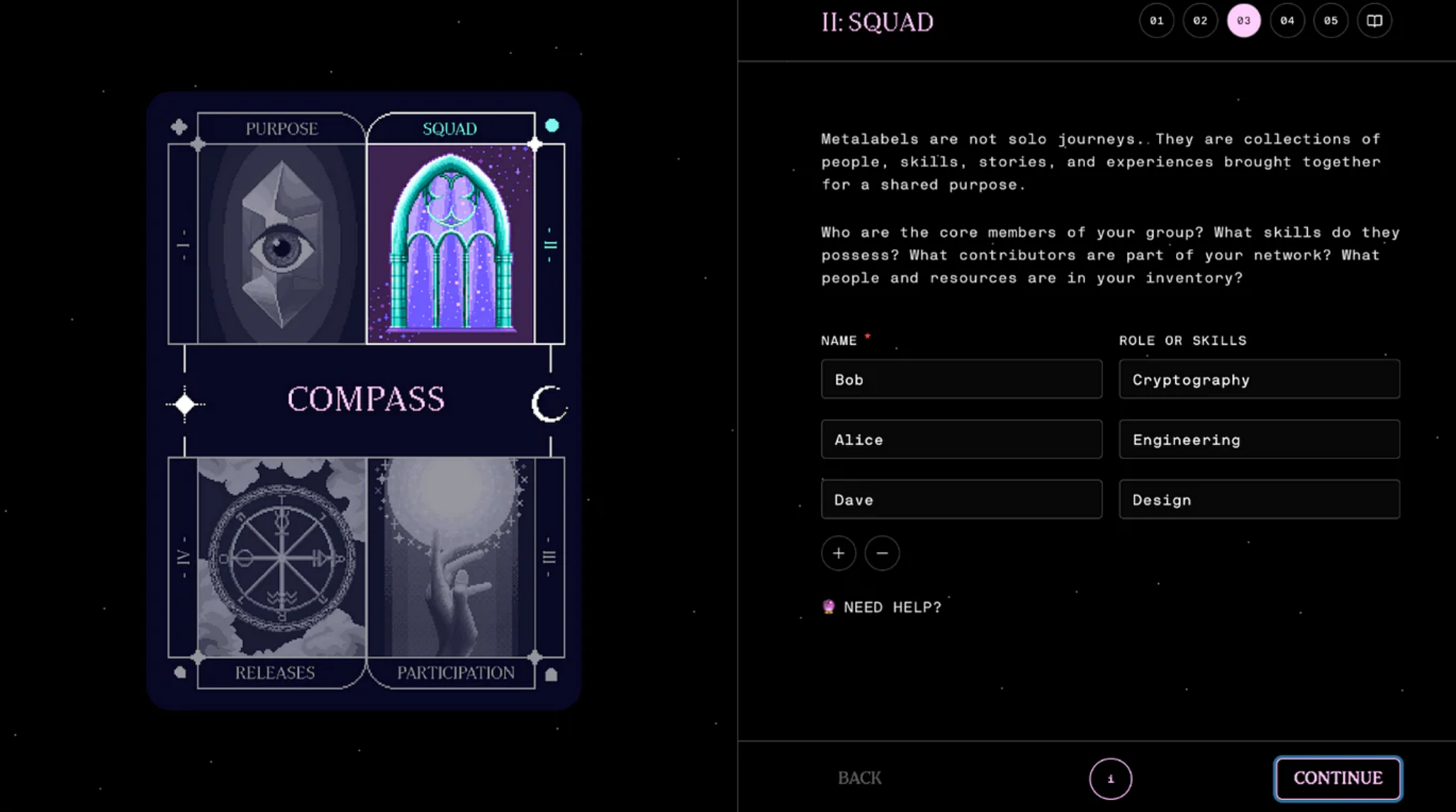
2. Coordination
How do creators decide how to allocate resources, or what ideas should get funded?
Traditionally, decisions have been made by intermediaries whose interests lie beyond what the creator's audience might actually want. Now, creators can make decisions and collectively manage the future direction of a project.
image description
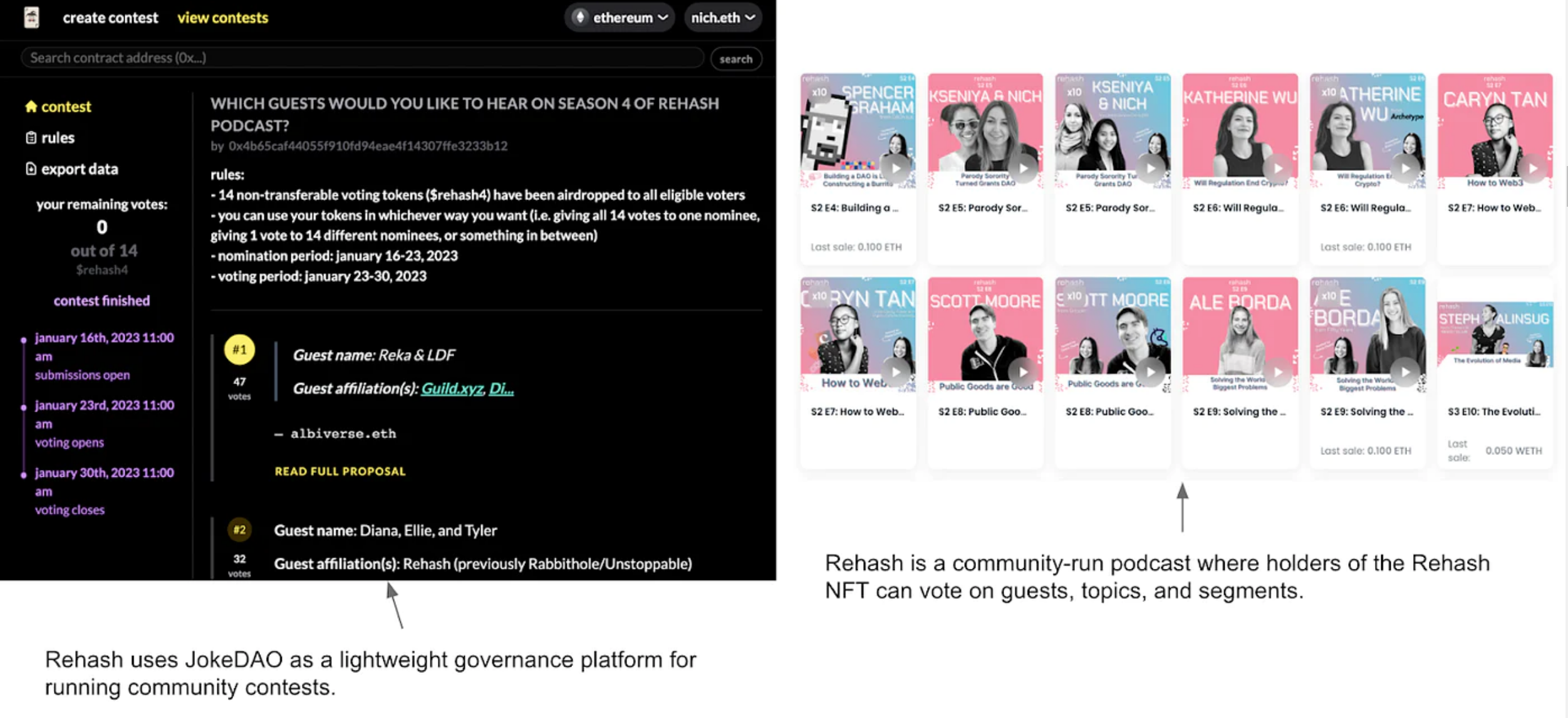
secondary title
3. Production
How do you integrate creative input into the final creative output?
While some traditional forms of media require multiple parties to be involved in production (e.g. record labels, musicians, songwriters, etc.), production is limited to concentrated groups. Web3 allows for the integration of various perspectives and individual contributions into the final product, opening up participation in the production process.
secondary title
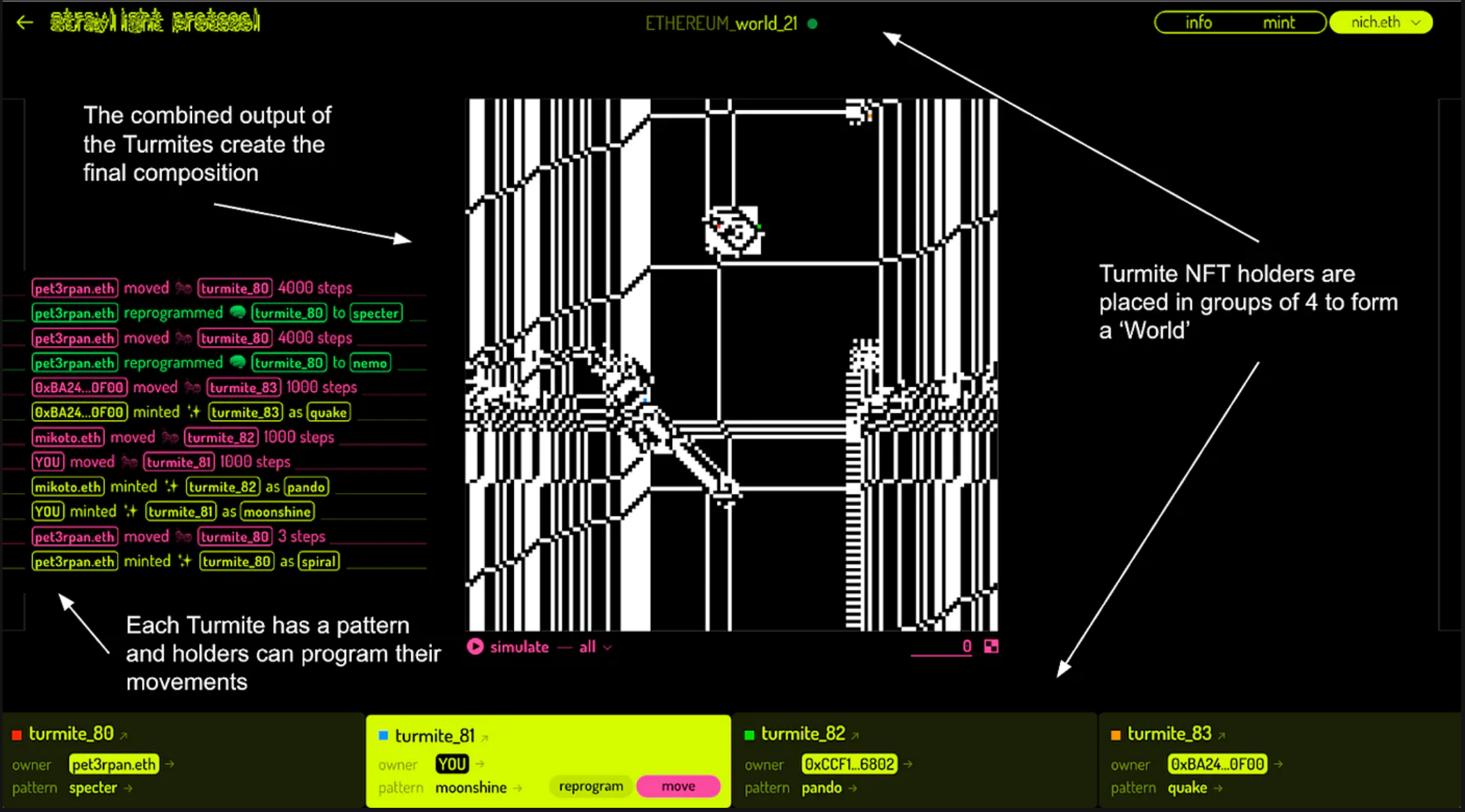
4. Value distribution
How is attribution tracked and value assigned to those creators who passively or actively contributed to the final output?
image description
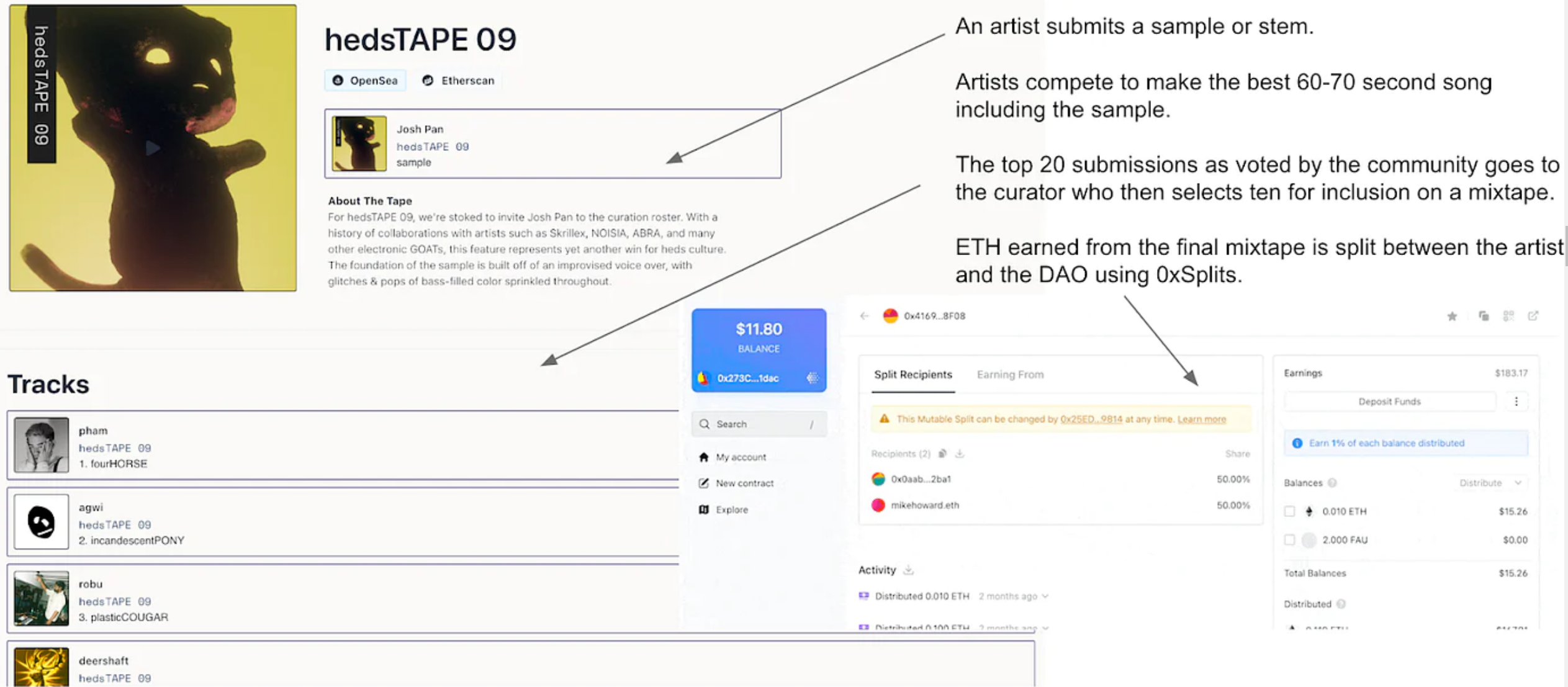
secondary title
5. After posting
The final output can evolve over time if/how as the community grows or assets change hands.
image description
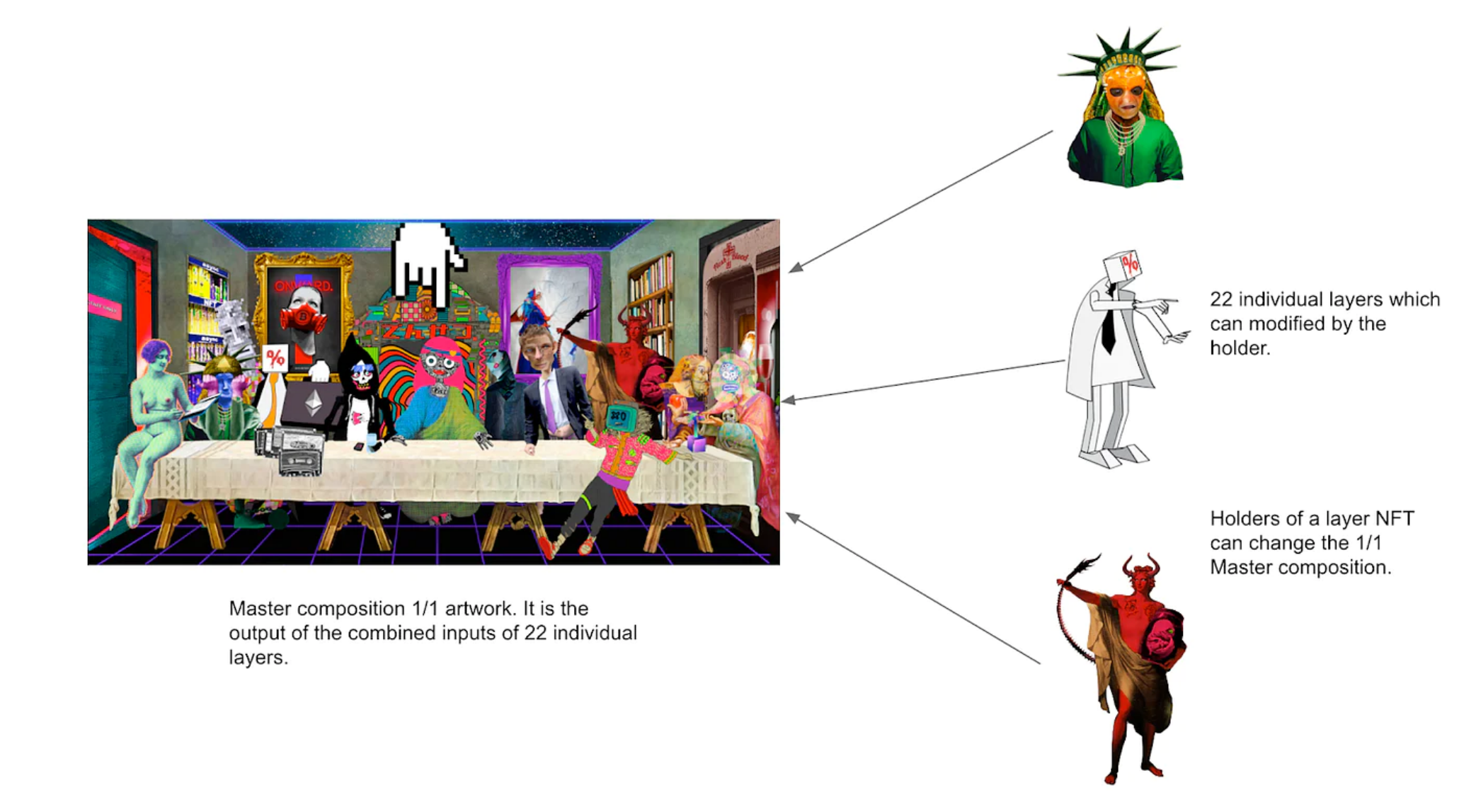
How Collectors Can Influence AsyncArt Showcases via Main Layer NFTs
image description
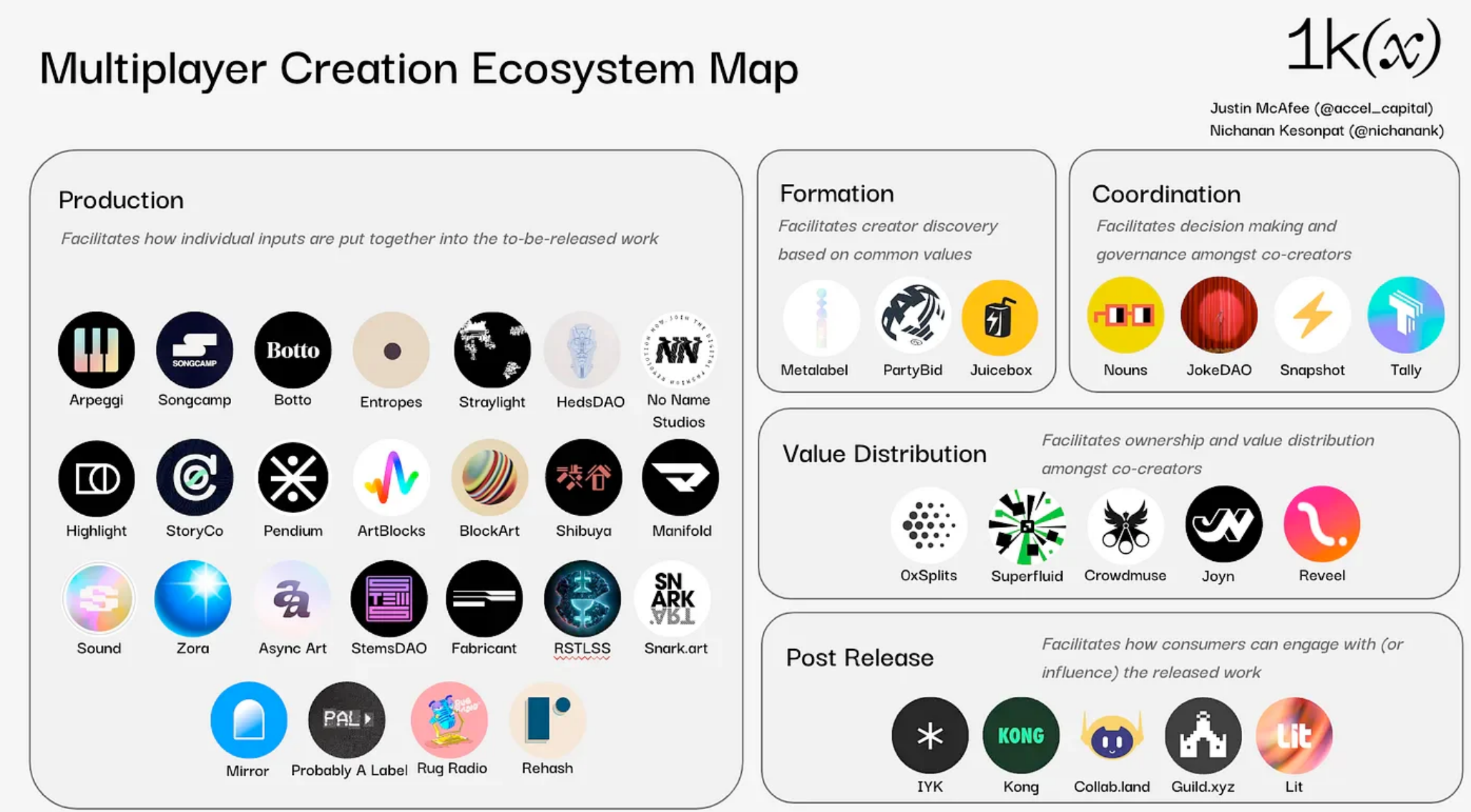
secondary title
multiplayer style
Multiplayer authoring occurs when individuals or groups provide input into the parameters or complete composition of the final product.
We can categorize it by asking 2 questions:
Who provides creative input and who puts it together?
Created by one person, one individual uploads the work to the media registry, and another party combines these primitives to form the final product. For example, beatmakers and instrumentalists upload to the Arpeggi sound library, and another artist combines these raw elements to form a song.
Curated groups, where musicians come together to release a record as a headless band, such as SongCamp's Chaos.
secondary title
What does authoring input look like?
Parameter inputs, collectors influence the final display of generated artwork include minting time, their wallet address or transfer activity (such as OG Crystals).
With the input of the product, the artist contributes a building block that can be easily combined with others to compose a complete product. For example, fashion designers provide "clothing" textures to end consumers to assemble into a cast wearable device using Fabricant to their liking.
Putting this together, Arpeggi and Fabricant can be categorized as"Single-person creation, product input". Songcamp's CHAOS album belongs to"Planning team, product input". OG Crystals and Entropes belong to"image description"。

multiplayer style
first level title
How did the multiplayer authoring infrastructure emerge?
image description
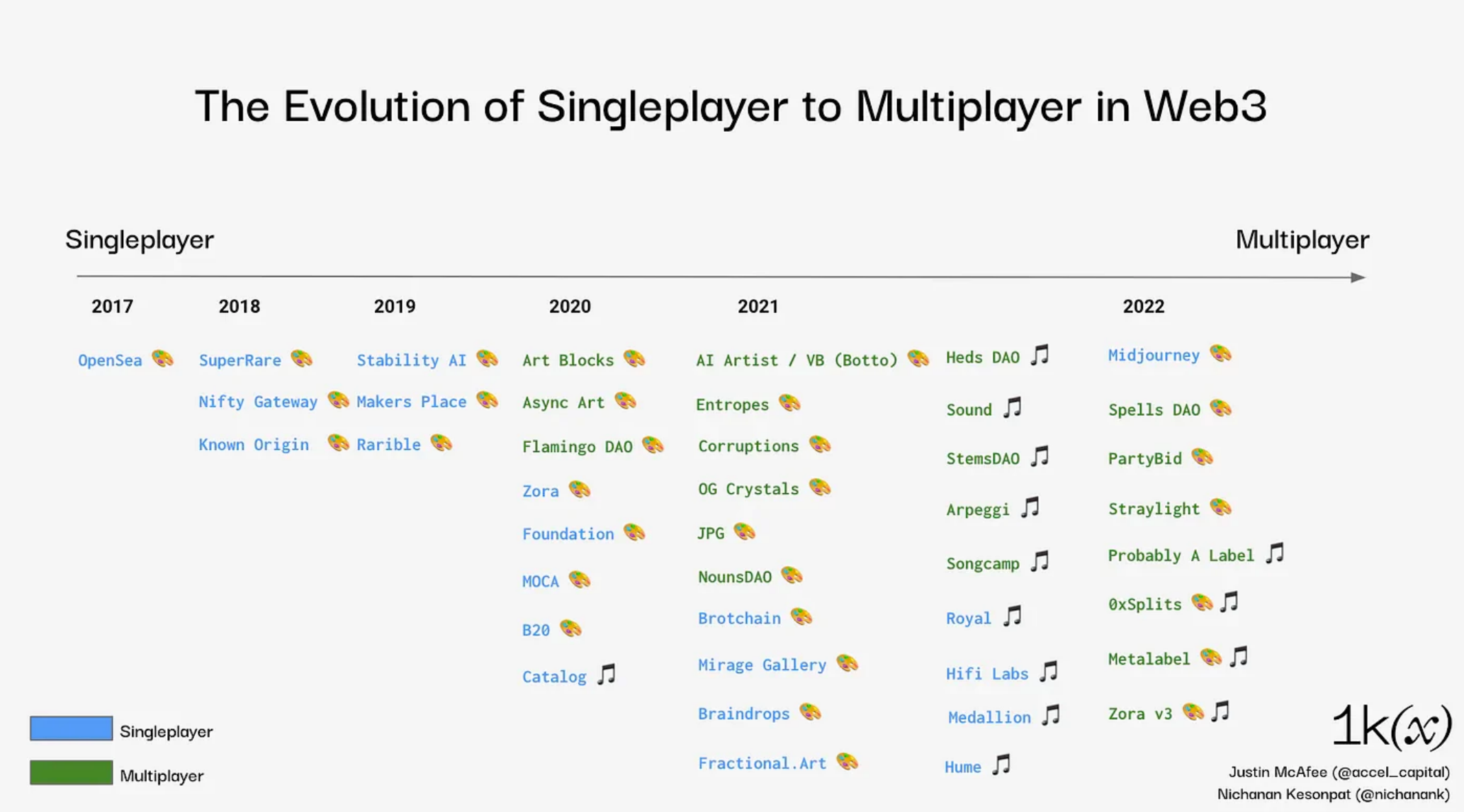
secondary title
Applications become infrastructure
From its launch in 2018 to DeFi Summer in 2020, Uniswap is mainly used as a decentralized exchange application. But because its smart contracts are on a public blockchain that anyone can build on, Uniswap is now critical infrastructure for more complex DeFi use cases like staking mining and automated liquidity management.
This pattern follows the application-infrastructure cycle we've seen in previous waves of innovation, where the proliferation of applications soon leads to a wave of infrastructure that enhances those applications and, in alternating, More complex use cases are unleashed in the response cycle.
For on-chain creative works, we’ve seen the proliferation of NFT minting platforms, a marketplace where creators can self-publish everything from art to writing and music, and a marketplace where they can make a living from a global audience.
PartyBid was launched as an app for collective NFT purchases funded by groups. This has been extended into the Party Protocol for group formation and governance infrastructure. Party Protocol has been used to build an on-chain tic-tac-toe game where players buy X or O NFTs through crowdfunding and decide each move.
Zora launched as an NFT minting platform and marketplace. It now offers an extensive tool suite for the creation, indexing, rendering and management of NFTs.
Sound, a music NFT platform and marketplace, is being protocolized into the Sound Protocol, a permissionless smart contract framework for musicians and creators with customizable metadata, versioning and payment modules.
secondary title
An extended use case of the DAO tool
Experiments with DAO tools and decentralized governance have provided fertile ground for multi-person authoring at various stages.
Collective formation, new tools like Metalabel* and PartyBid accelerate the formation of DAOs, communities and groups. These protocols attempt to form information as seamlessly as possible by connecting interest- or idea-based individuals from around the world and allowing them to create lightweight structures for self-organization.
Governance, bottom-up proposal management tools like JokeDAO* and Prop House, and voting infrastructure like Snapshot* can be employed during the coordination phase of multiplayer game creation.
Financial management and compensation, co-creators of published works can manage their income and distribute income through tools such as Safe* (multisig wallet), Superfluid (token flow) and 0x Splits (programmable token distribution logic).
Access control, tokenized access control has become ubiquitous in the web3 community thanks to products like Collab.Land, Highlight* and Guild. Programmable access control protocols like Lit*, and physical products like IYK*, Kong*"bridge"The ways who can interact with (and influence) creative works after launch will be expanded.
secondary title
Platform-independent registration
On-chain registries are the building blocks of decentralized attribution, and registry data can be referenced by any platform or service and used for any authentication, authorization, and value distribution logic.
Manifold's Royalty Registry provides any marketplace with a way to look up royalties for any given token contract.
Arpeggi's Audio Relationship Protocol (ARP) is a decentralized sound library with full audio and author information, providing attribution data for a song's collaborators.
secondary title
Pure experimentation with on-chain innovation
Entropes and Spells, Entropes are evolving NFTs whose art gains visual complexity as tokens are transferred to new wallets. The artwork at any given point in time is a snapshot of the chain of previous owner transfers. Spells add another layer of interactivity, as holders of the Spells NFT can cast spells on Entropes to add special temporary effects.
OG.Art, OG.Art is a dynamic art platform where initial miners pass their wallet address and history"seed"Art. exist"growth period", as tokens were transferred, new structures and motifs were added to the art. Every OG.Art collectible has a community of collectors and a DAO that, through direct voting, plays a role in the development of the project and shaping its future.
Similar to how the popularity of CryptoKitties has accelerated the development and adoption of ERC 721, these experiments can lead to new token standards and protocols for multi-person creation. Spells is the first implementation of EIP 5050, a proposal for a standard and messaging protocol for interactive NFTs, defining how an action can be initiated and transmitted between a token and (optionally) a shared state environment.
Standardization and protocolization of multi-person creative stacks will help abstract away the complexity of building tools from the ground up, improving the discoverability of new types of creative work and paving the way for more complex experimentation on top of it.
These tools have opened up a whole new class of creators. Today, people who might not even consider themselves creators can already influence cultural output on web3: by minting generative art on ArtBlocks, by coming up with Rehash podcast episodes, by moving their Turmites on Straylight Worlds.
The main impetus for multiplayer authoring is the underlying primitives. Primitives can be understood as basic components that are assembled, modified, or otherwise exploited by one party to affect the final creative outcome of all parties. Primitives can be of many kinds, but some notable examples include Music Stems, Art Blueprints, Synthesizable Layers, and Entropy.
Summarize
Summarize
Oral storytelling, folk music, fan fiction, and early role-playing creations have long used collective creative input to create cultural artifacts centered around a set of values or ideas. The resulting body of work encapsulates the cultural zeitgeist throughout history, achieving more than any single individual.
Multiplayer game creation tools can turn passive consumers into creators by turning any on-chain interaction into a form of self-expression. These tools also bring artists closer to their audiences than ever before through tighter pre-production feedback loops and post-release interactions. Blockchain and platform-agnostic standards add provenance and composability to creative works, enabling communities to sample, remix and leave their mark on culture in ways that were not possible before.
After analyzing web3: NFT publishing platforms, infrastructure, developer tools, and the evolution of creator-centric products and services in the governance economy, we are pleased to see that the space is innovating towards multi-person authoring , which we believe will usher in a new era of participatory media, where the value of content lies in the cumulative engagement of multiple parties rather than the participation of a single individual.



